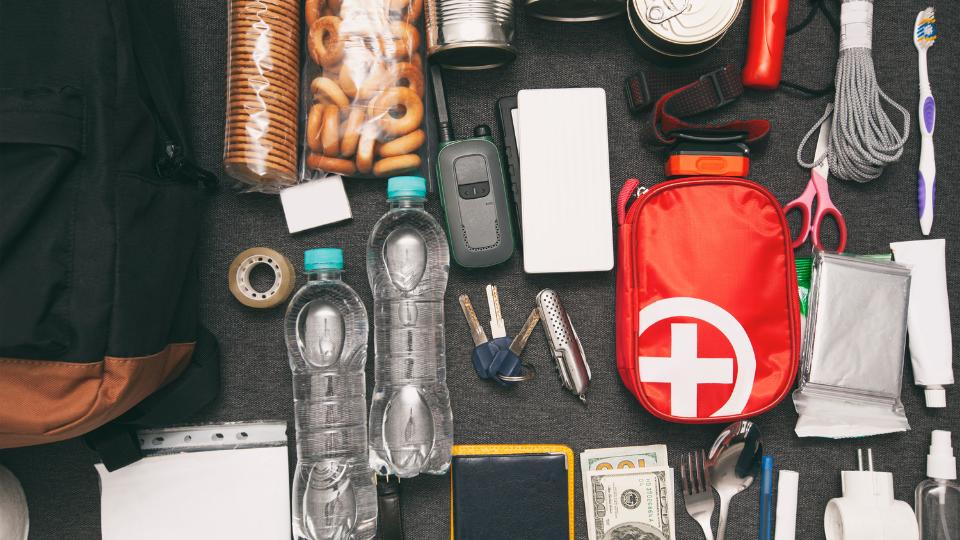Do You Have an Emergency Kit for Your Car?

An emergency car kit includes needed supplies in the event of a misfortune on the road such as a flat tire, engine trouble, being stuck in a remote area or something more serious like poor road conditions due to bad weather or natural disasters such as floods, fires or earthquakes.
It's like a 72-hour kit on the go but also includes tools specific to vehicle emergencies. You can purchase a ready-made emergency car kit, or you can assemble one that fits your family’s needs.
Items to include that are typically found in a 72-hour kit:
- Snacks, water, non-perishable foods and a can opener.
- Water bottle with a purifier or a filter so you can use water from a stream or melted snow.
- Emergency thermal blanket to provide warmth or shelter.
- Warm clothing, including gloves.
- Contact information for family members, doctor, insurance, mechanic, etc., either on a piece of paper stored in the glove box or stored in your cell phone. Be sure to have a car charger for your phone as well as a backup charger that is either battery or solar powered.
- Tissues or toilet paper and diapers if you have young children.
- First aid kit, including basic first aid supplies and necessary medications for allergies, pain, etc.
- Microfiber towels that are highly absorbent and quick drying, and/or compressed towels that save space.
- Matches or a lighter.
- Cash.
- Notebook and pen.
Then add items specific to vehicle emergencies:
- Distress sign or emergency sign to hang in car window or on antennae.
- Orange safety vest.
- Portable power unit, which can be invaluable in many emergency situations.
- Jumper cables.
- Snow and ice scraper.
- Flares.
- Flashlight or spotlight with extra batteries, or solar powered or windup lights.
- Portable radio that is wind up or battery powered.
- Rope, tie downs, bungee cords.
- Spare tire, jack, lug wrench.
- Basic tool kit and a shovel.
It can be difficult to find space in a vehicle to store all of the necessary emergency equipment. Rather than using one big container, items can be stored in multiple small containers that can be tucked into cubbies, under seats, in the glove box, trunk or door compartments.
Other things to consider for peace of mind on the road:
- Let someone know where you are going and when you will return.
- Keep the gas tank at least half full at all times.
- Check weather and road conditions before leaving home.
- Assess your surroundings for safety.
- Stay with your vehicle.
- Carry a roadside assistance card at all times, or know how to use assistance services such as OnStar.
Utah State University Extension
Related


























